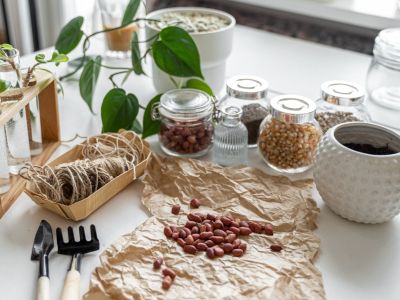How to Grow Peanuts Indoors
Indoor peanut growing isn’t at all that difficult. Simply start by filling a pot with lightweight potting mix. One 5 to 6 inch (13-15 cm.) container is large enough for starting five or six seeds. Be sure the container has a drainage hole in the bottom; otherwise, your peanut plant is likely to suffocate and die. Remove a small handful of raw peanuts from the shells. (Leave them in the shells until you’re ready to plant.) Plant the peanuts, not touching, then cover them with about one inch (2.5 cm.) of potting mix. Water lightly. Cover the container with clear plastic to create a greenhouse environment for indoor peanut growing. Place the container in a warm room, or on top of your refrigerator. Remove the plastic as soon as the peanuts sprout – usually in about a week or two. Move each seedling to a large container when the seedlings are 2 to 3 inches (5-8 cm.) tall. A pot measuring at least 12 inches (31 cm.) deep and 18 inches (46 cm.) across will hold one bushy peanut plant. (Don’t forget – the pot must have a drainage hole.) Put the pot in a sunny spot and turn it every couple of days so the peanut plant grows straight. Water regularly to keep the potting mix slightly moist. Watch for yellow flowers to appear after about six weeks after germination. Regular water is even more important during blooming. Feed the plant with a light application of fertilizer when flowers appear. Use a fertilizer rich in potassium and phosphorus, but no nitrogen. Legumes create their own nitrogen and don’t require supplements. Consider an organic fertilizer if you intend to eat the peanuts. Harvest the peanuts when the leaves begin to turn dry and brown.
